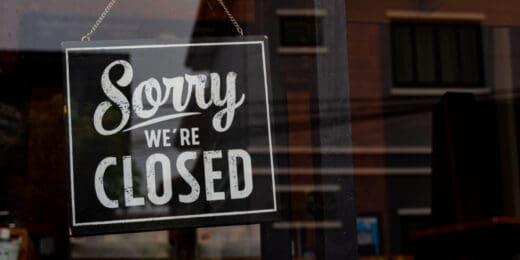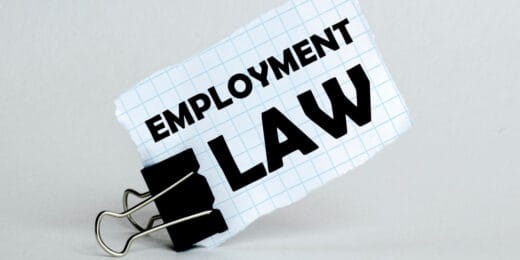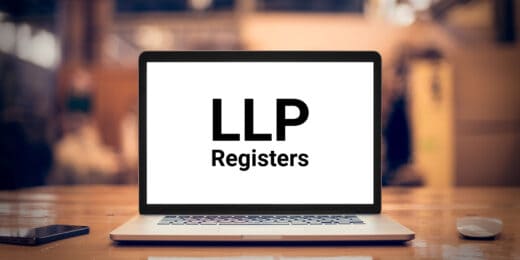Company insolvency occurs when a company is unable to meet its financial obligations to lenders and creditors. In other words, it means that a company has run out of money and can’t pay its debts. It is a very serious situation that must be addressed immediately and in accordance with the Insolvency Act 1986.
In this blog, we will discuss what happens when a company becomes insolvent and the various options available for dealing with this type of financial situation.
When is a company considered to be insolvent?
Insolvency is the corporate version of bankruptcy. A company is deemed to be insolvent, or at imminent risk of becoming so, if it fails one of these main insolvency tests:
- Cash flow test – the company cannot pay its bills on time and in full
- Balance sheet test – the company has more liabilities (things it owes) than assets (things it owns) on its balance sheet
When a company finds itself facing insolvency, it is at serious risk of being closed down. This is why it is important for directors to stay on top of finances and act swiftly if the company has problems – no matter how small these issues may initially appear.
How to deal with company insolvency
If your company is insolvent or you think that it is nearing insolvency, you must seek advice from a licensed Insolvency Practitioner as soon as possible.
Without professional help, your company’s financial situation will only get worse. Moreover, you could be held personally liable for business debts (and even prosecuted) if you continue to trade whilst knowing that your company is insolvent.
When dealing with an insolvent company, you have four options:
- Reach an informal agreement with your creditors
- Enter into a Company Voluntary Arrangement (CVA)
- Put the company into administration
- Liquidate (close) the company
Option 1 – Reach an informal agreement with creditors
If your company’s financial issues are temporary and there’s no threat of formal action from your creditors, it may be possible to reach an informal agreement to settle your outstanding debts on different terms. For example, by reducing your monthly payments or repaying over a longer period of time.
Contact your creditors to discuss this option as soon as you become aware of your company’s financial problems. Ensure that you’re aware of any costs associated with changing the repayment terms, including how interest payments may be affected.
Informal agreements with creditors are not legally binding; therefore, your creditors have the right to withdraw the agreement at any point.
Option 2 – Enter into a Company Voluntary Arrangement (CVA)
A Company Voluntary Arrangement (CVA) is a binding agreement between an insolvent company and its creditors to pay debts over a fixed period.
You can apply for a CVA if the company’s directors or shareholders agree to it. This must be done through an Insolvency Practitioner, who will work out an arrangement of the debt you are able to pay and a payment schedule.
They will contact your creditors with the proposed arrangement and ask them to vote on it. The Company Voluntary Arrangement is approved if at least 75% (by debt value) of creditors who vote agree to it.
Payments to creditors must be made through the Insolvency Practitioner until the debts are satisfied. The company may continue trading whilst repaying its debts.
Option 3 – Put the company into administration
Putting your company into administration involves appointing and handing over control of the business (including all of its assets) to a licensed Insolvency Practitioner.
Your Insolvency Practitioner will act as the administrator. They will contact your creditors and Companies House to notify them of their appointment.
Whilst the administrator is in charge of the company, your creditors cannot take legal action to recover debts or initiate compulsory liquidation.
The administrator has 8 weeks to explore all available options, including:
- Trying to rescue the company by negotiating a Company Voluntary Arrangement (CVA) with your creditors
- Selling the business as a ‘going concern’ – this means that another company will buy the business and continue trading with the same clients, employees, orders, etc
- Selling the company’s assets as part of a creditors’ voluntary liquidation, paying your creditors from any funds raised, and then closing the company
- Closing the company if there is nothing to sell and, therefore, no way to repay creditors
When the administrator has made a decision, they will write a statement to explain what they plan to do with the company. A copy of this statement will be sent to the company’s creditors, employees, and Companies House, inviting each party to approve or amend the proposal.
More often than not, the administrator’s proposal will achieve a more favourable result for creditors than immediately winding up the company.
Administrative receivership
Administrative receivership, or simply ‘receivership’, is an option available only to secured creditors (usually banks) who have floating charges over a company’s assets. This is not the same as ‘administration’, in which the administrator has a responsibility to all creditors of the company.
If the company defaults on a secured loan or otherwise breaches the terms of the loan agreement, the secured creditor may appoint an administrative receiver to recover the debt. Generally, courts are not involved in this process.
An administrative receiver, who is a licensed Insolvency Practitioner, will take control of (and sell) company assets covered by the floating charge. Their objective is to recover enough money to pay themselves, preferential creditors (e.g. employees), and the floating charge holder. They do not make payments to unsecured creditors.
Administrative receivers also have the power to remove directors and employees and sell the business in its entirety. Their decision-making process is based on what is best for the company’s secured creditors, rather than its director and shareholders.
Option 4 – Liquidate the company
Liquidating a company involves closing down the business. When this happens, the company is wound up and struck off (removed from) the register at Companies House.
If your company is insolvent, you can liquidate it in one of two ways:
- Creditors’ voluntary liquidation – A director can propose a creditors’ voluntary liquidation if at least 75% (by share value) of shareholders agree to the company being wound up. An Insolvency Practitioner will be appointed as liquidator and take control of the company.
- Compulsory liquidation – A director can apply to the court to wind up a company through compulsory liquidation if at least 75% (by share value) of shareholders agree. Otherwise, all directors must present the winding up petition. Creditors can also apply to the court to put the company into compulsory liquidation. If the court agrees, an official receiver (the ‘liquidator’) will be put in charge of the liquidation process.
When a company is liquidated, all of its assets are sold and the proceeds are distributed to creditors. If there’s any money left over, it will be divided between the shareholders.
When the liquidation process is complete, the company is struck off the register at Companies House and ceases to exist.
Where to get help with company insolvency
If your company is having financial problems, you must seek professional help and advice from a qualified solicitor, chartered accountant, licensed Insolvency Practitioner, or financial adviser as soon as possible.
Business Debtline is an excellent service, providing free debt advice and guidance to small businesses in England, Wales, and Scotland.
If you require information about the insolvency process (England & Wales), please contact the Insolvency Service helpline on 0300 678 0015. This service is available 9am to 5pm Monday to Thursday, and 9am to 3pm on Friday.
Different guidance is available for insolvency in Scotland and insolvency in Northern Ireland.
So that’s how company insolvency works…
We’ve discussed what company insolvency means, how to determine if your company is currently insolvent or reaching that point, and the different options available to you in these situations.
If you have any questions about this topic or limited companies in general, please contact our company formation team on 020 7871 9990 or leave a comment below.
Please note that the information provided in this article is for general informational purposes only and does not constitute legal, tax, or professional advice. While our aim is that the content is accurate and up to date, it should not be relied upon as a substitute for tailored advice from qualified professionals. We strongly recommend that you seek independent legal and tax advice specific to your circumstances before acting on any information contained in this article. We accept no responsibility or liability for any loss or damage that may result from your reliance on the information provided in this article. Use of the information contained in this article is entirely at your own risk.






Join The Discussion